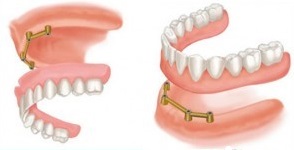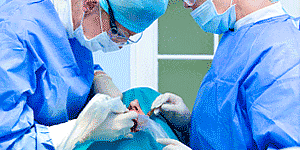
توضیحاتی در مورد تحلیل استخوان و بیماری های اطراف ایمپلنت
2015-11-08
توضیحاتی در مورد دندانپزشکی ایمپلنت
2015-11-09Tooth extraction is done when gum disease has loosened or severely damaged a tooth. In most cases, a dentist can pull (extract) your tooth. But if the procedure is complicated or risky, an oral or maxillofacial surgeon may do the extraction
Your dentist or oral surgeon may give you a local anesthetic to numb the area where the tooth will be removed. A stronger, general anesthetic may be used, especially if several of your teeth need to be removed at the same time. A general anesthetic prevents pain in the whole body and will make you groggy or sleep through the procedure
After removing the tooth, the dentist or surgeon may put in stitches (sutures) and place gauze over the wound to help stop bleeding
What To Expect After Surgery
Typically it takes only a few days to recover from a tooth extraction. Be sure to follow the home care instructions that your dentist or oral surgeon gives you. If you have questions about your instructions, call the dentist or surgeon. The following are general suggestions to help speed recovery
Take painkillers as prescribed
After 24 hours, you can rinse your mouth gently with warm salt water several times a day to reduce swelling and relieve pain
Change gauze pads before they become soaked with blood
Relax after surgery. Strenuous physical activity may increase bleeding
Use a damp tea bag over the empty tooth socket to help stop bleeding
Eat soft foods, such as gelatin, pudding, or light soup. Gradually add solid foods to your diet as the area heals
Do not lie flat. This may prolong bleeding. Prop up your head with pillows
Continue to carefully brush your teeth and tongue
Apply an ice or cold pack to the outside of your mouth to help relieve pain and swelling
Do not use sucking motions, such as when using a straw to drink
Do not smoke
Your dentist will remove your stitches a few days after the surgery
Why It Is Done
An extraction is needed when gum disease has damaged a tooth so badly that there is no other way to prevent the infection from spreading and damaging nearby teeth and bones
How Well It Works
Removing a tooth prevents gum disease from spreading and damaging nearby teeth and bones
Risks
Tooth extraction can introduce harmful bacteria into the bloodstream. Gum tissue is also at risk of infection. You may need to take antibiotics before and after surgery if you have a condition that puts you at high risk for a severe infection or if infections are particularly dangerous for you. You may need to take antibiotics if you
Have certain heart problems that make it dangerous for you to get a heart infection called endocarditis
Have an impaired immune system.
Had recent major surgeries or have man-made body parts, such as an artificial hip or heart valve.
After an extraction, a blood clot forms in the tooth socket. The clot protects the bone while the healing process takes place. If that blood clot is dislodged, you may have a dry socket, in which the bone is exposed. Dry sockets may last for several days and may cause severe pain that sometimes includes ear pain
What To Think About
If you delay having a damaged tooth removed, your gum disease can spread and cause you to lose more teeth
Your dentist or oral surgeon may recommend that a bridge camera.gif or implant be installed after extraction
To promote healing, stop all use of tobacco. Smoking or using spit tobacco decreases your ability to fight infection of your gums and delays healing. To learn more, see the topic Quitting Smoking
Complete the surgery information form (PDF) to help you prepare for this surgery
:reference
www.webmd.com
:related content






